Introduction to Agave Cultivation
Agave is a succulent plant native to Mexico, known for its importance in the production of tequila, mezcal, and other derived products such as agave syrup and fibers. Agave cultivation is an essential component of the Mexican agro-industry and has gained worldwide recognition. This article offers a comprehensive guide on the management of agave cultivation, from land preparation to harvest and post-harvest management, with the aim of maximizing production and the quality of the final product.
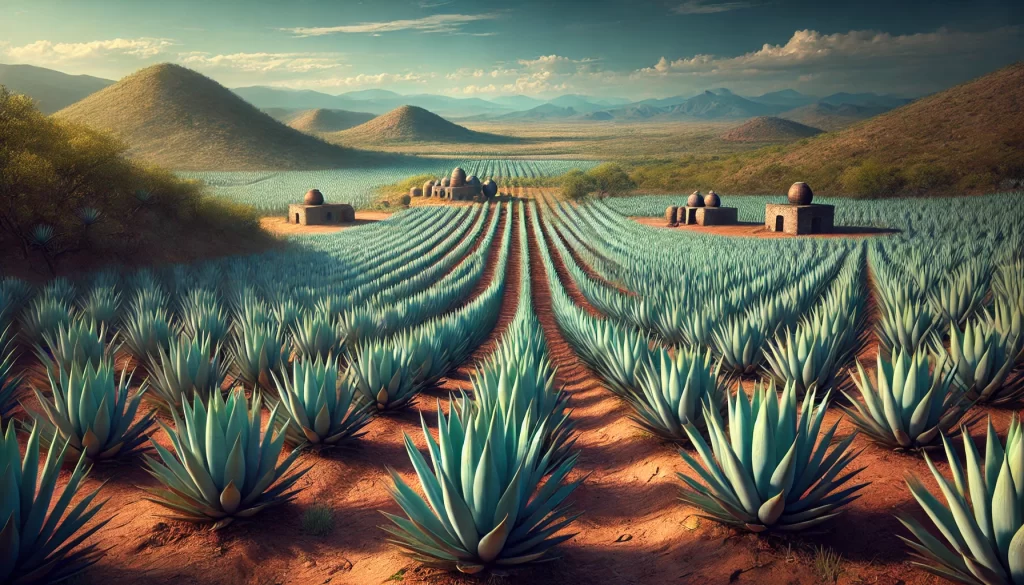
Land Selection and Soil Preparation
Ideal Climatic Conditions
Agave thrives in semi-arid and arid climates, with optimal temperatures between 20°C and 30°C. This plant is highly drought-resistant and can grow in regions with low annual rainfall, between 300 and 600 mm. However, agave does not tolerate prolonged frost, so it is important to select regions with mild winters.
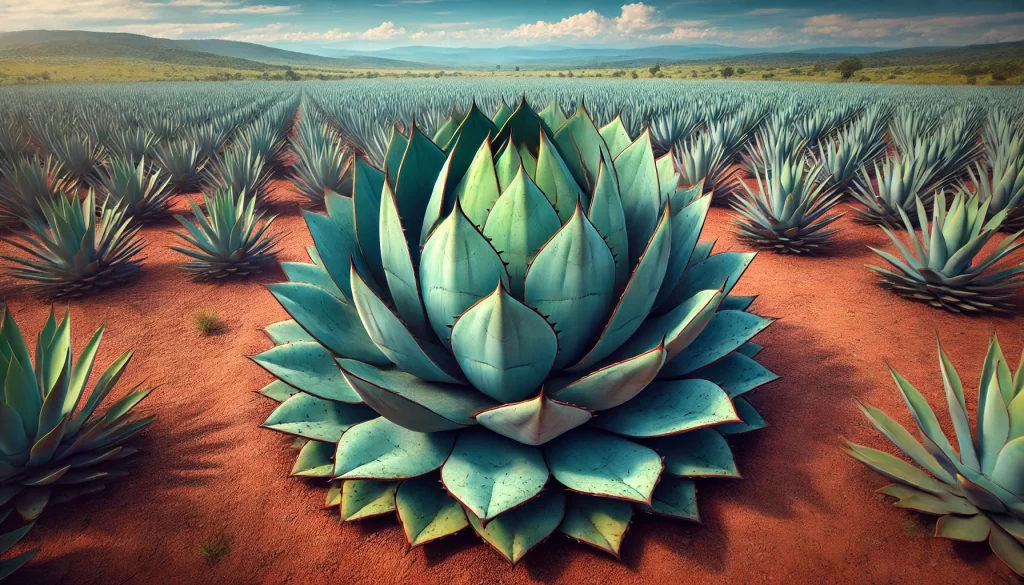
Soil Selection
Agave prefers well-drained, light soils of low fertility, such as sandy or rocky soils. Soils with a pH of 6.0 to 7.5 are ideal. It is crucial to avoid waterlogged soils, as excess water can cause root rot.
Soil Preparation
- Minimal Tillage: Since agave adapts well to poor and eroded soils, land preparation can be minimal, focusing on weed removal and ensuring good drainage.
- pH Correction: If necessary, apply amendments to adjust soil pH, although agave is usually tolerant of a wide range of conditions.
- Organic Matter Incorporation: Although not essential, incorporating well-decomposed compost or manure can improve soil structure and help with initial plant establishment.
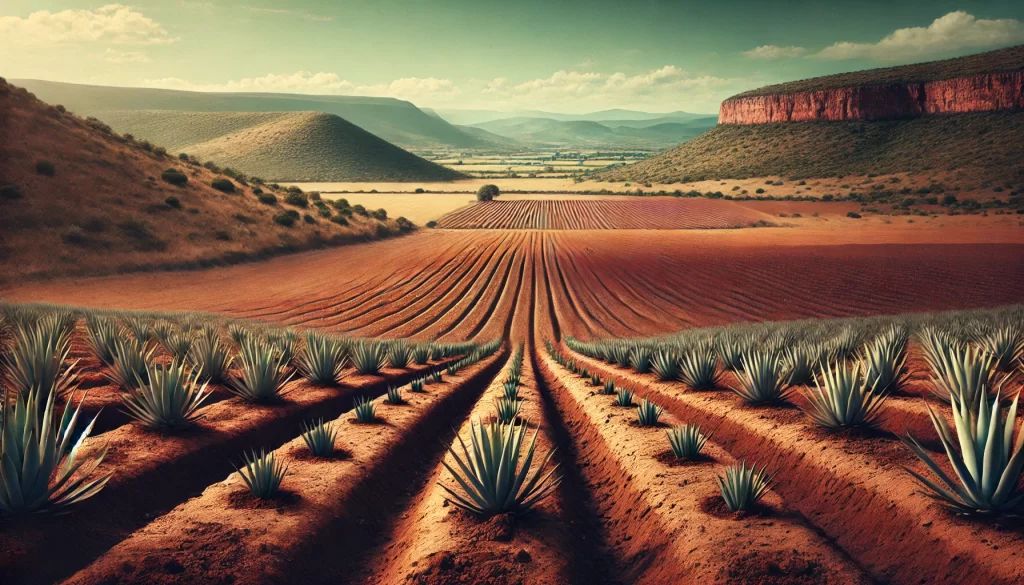
Agave Planting
Variety Selection
The choice of agave variety depends on the final use and the climatic conditions of the region. Some of the most commonly cultivated varieties include:
- Agave tequilana Weber var. azul: Primarily used for tequila production.
- Agave angustifolia: Used in mezcal production.
- Agave salmiana: Known for its use in pulque production.
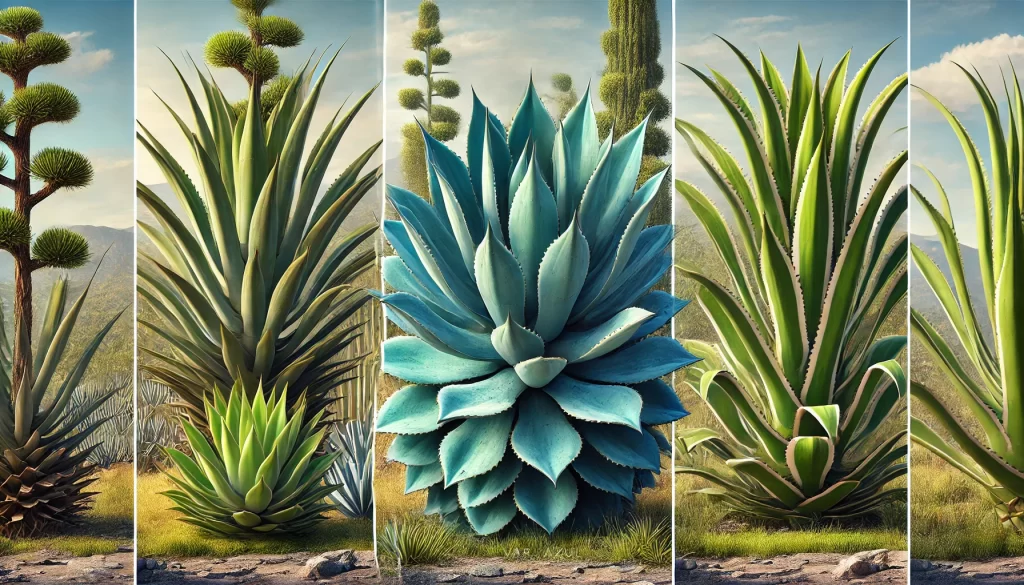
Propagation Methods
Agave is primarily propagated through offsets (seedlings that grow around the mother plant) or through seedlings produced in nurseries. Offsets are the most common option due to their availability and low cost.
Agave Planting
- Spacing: The typical spacing is 1.5 to 2 meters between plants and 2 to 3 meters between rows, depending on the variety and soil conditions.
- Planting Method: Offsets should be planted in shallow holes, ensuring that the base is in firm contact with the soil. It is important to plant at the beginning of the rainy season to ensure good rooting.
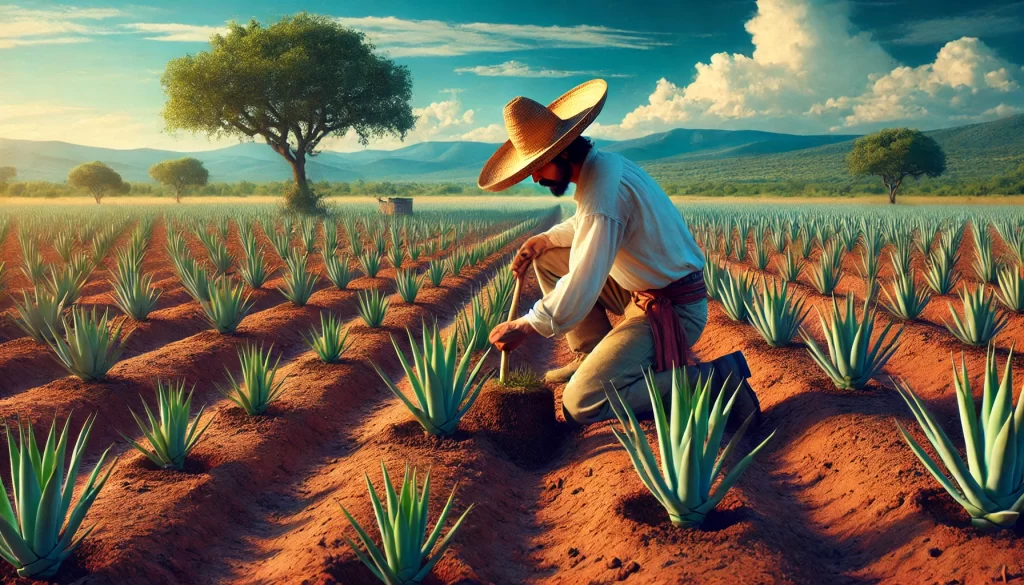
Irrigation and Water Management
Agave Water Requirements
Agave is a very drought-resistant plant and requires minimal irrigation management. During establishment, supplemental irrigation may be provided to ensure good rooting, but once established, the plant generally relies on natural rainfall.
- Establishment: Moderate irrigation during the first few months after planting to ensure rooting.
- Maintenance: Once established, agave does not require additional irrigation unless there are extreme drought conditions.
Irrigation Systems
- Drip Irrigation: Although uncommon, a drip irrigation system can be used during establishment in very dry areas or sandy soils to ensure a good start.
- Rainfed Irrigation: In most regions, agave is cultivated without additional irrigation, taking advantage of natural rainfall.

Agave Fertilization
Nutritional Requirements
Agave is a plant that does not require intensive fertilization, as it grows well in low-fertility soils. However, in extremely poor soils, minimal fertilizer applications may be made to improve growth.
- Nitrogen (N): Promotes vegetative growth but should be applied sparingly to avoid excessive aerial growth.
- Phosphorus (P) and Potassium (K): Can be applied to improve root development and disease resistance, although generally in low amounts.

Fertilization Plan
- Base Fertilization: If necessary, apply a small amount of slow-release fertilizer at planting time.
- Maintenance Fertilization: In very poor soils, a balanced fertilizer can be applied once a year during the first two or three years of growth.
Pest and Disease Management
Common Pests
Agave is generally resistant to pests but can be affected by some, especially under intensive management conditions. The most common pests include:
- Agave Weevil (Scyphophorus acupunctatus): Attacks the base of the plant, causing significant damage and, in severe cases, the death of the plant.
- Agave Weevil (Metamasius spp.): Feeds on the leaves and can spread secondary diseases.
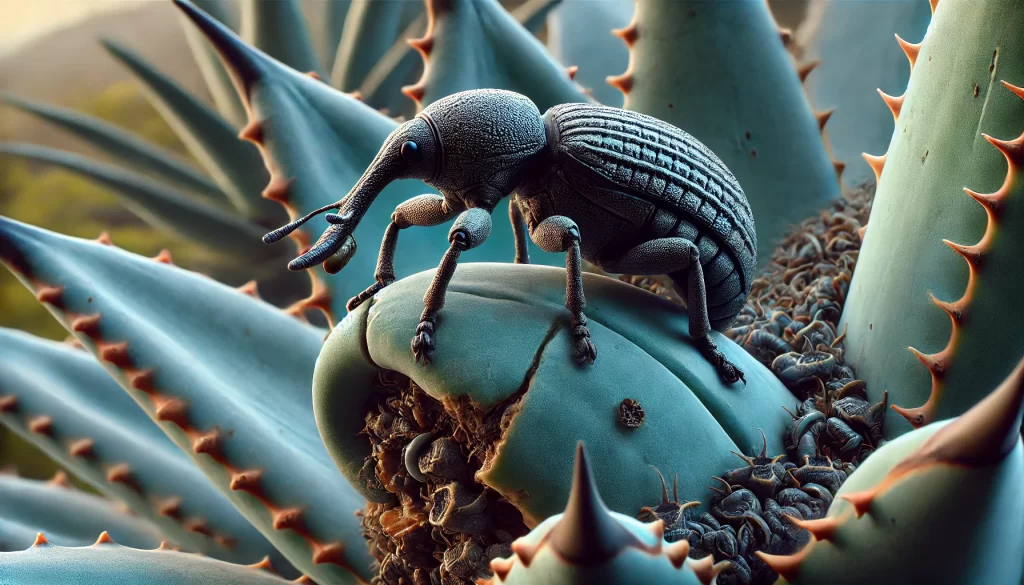
Control Strategies
- Regular Monitoring: Regularly inspect plants to detect pests early.
- Biological Control: Introduce natural predators or parasitoids to control pest populations.
- Insecticide Application: Use specific insecticides only when necessary and follow technical recommendations to minimize environmental impact.
Common Diseases
Diseases can be a problem in agave cultivation, especially in high humidity conditions or poorly drained soils. The most common diseases include:
- Crown Rot (Fusarium spp.): Causes rot at the base of the plant, affecting its development.
- Leaf Spots: Caused by fungi, which can reduce photosynthesis and weaken the plant.
Control Strategies
- Sanitary Management: Remove affected plants and improve soil drainage.
- Fungicide Use: Apply preventive fungicides in areas where diseases are common.
- Crop Rotation: Avoid continuous planting in the same area to reduce disease pressure.
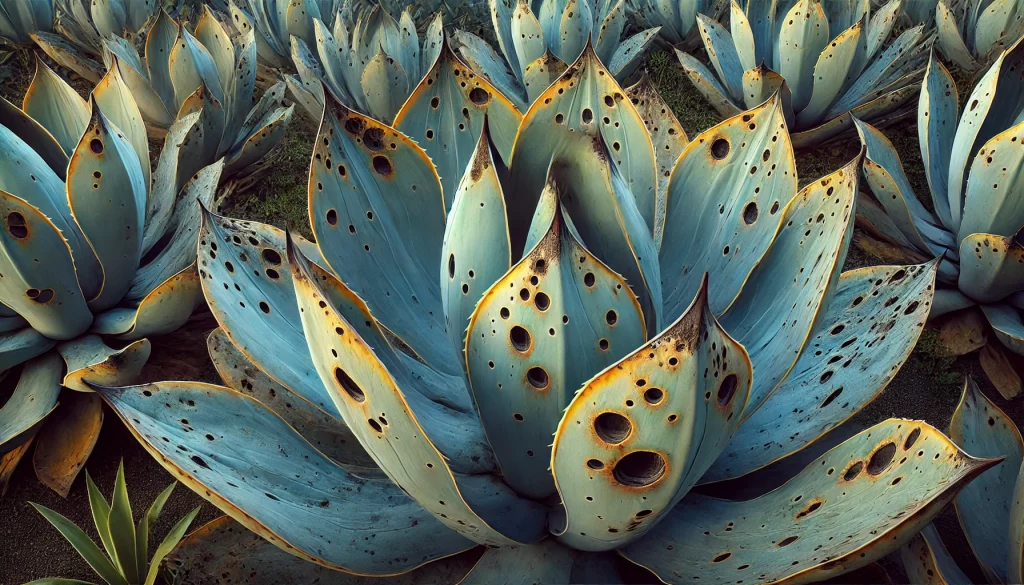
Harvest and Post-Harvest Management
Maturity Indicators
Agave is generally harvested when it reaches an age of 7 to 10 years, depending on the species and growing conditions. Maturity indicators include:
- Full Development of the Quiote: In some varieties, the appearance of the quiote (flowering stalk) is an indicator that the plant is ready for harvest.
- Size and Weight: The leaves become thicker and heavier, indicating a high sugar content.
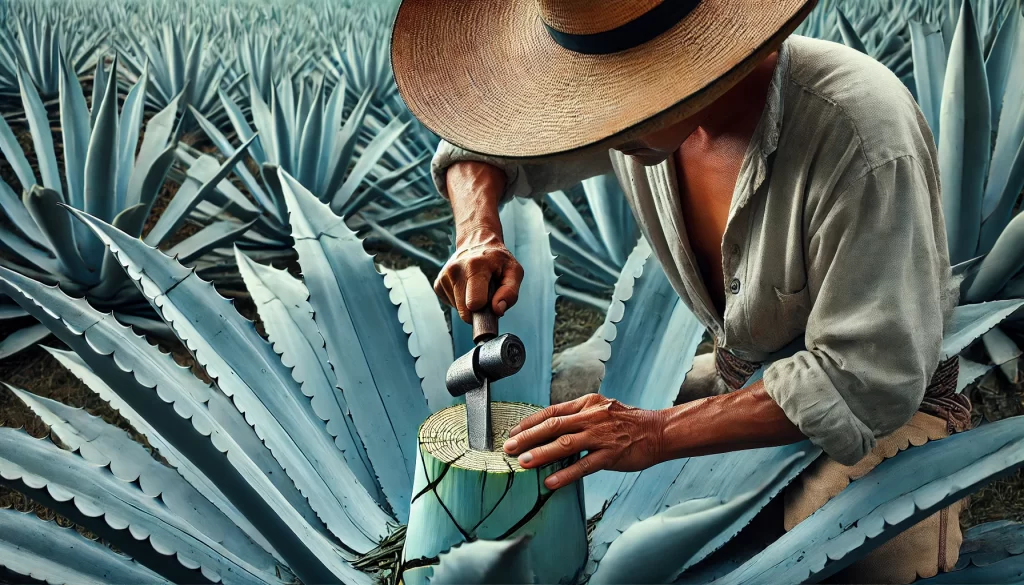
Harvesting Techniques
Agave harvesting is done manually, using tools such as the coa, which is used to cut the leaves and expose the piña or heart of the agave, which is the part used for the production of tequila, mezcal, or other products.
Post-Harvest Management
Post-harvest management is crucial to preserving the quality of the agave and maximizing yield in production. Recommended practices include:
- Quick Transport: Piñas should be transported quickly to the distillery or processing plant to avoid unwanted fermentation.
- Temporary Storage: If it is necessary to store the piñas before processing, it should be done in dry, cool conditions to prevent decomposition.

 AgronoBlog – Agriculture Blog
AgronoBlog – Agriculture Blog 